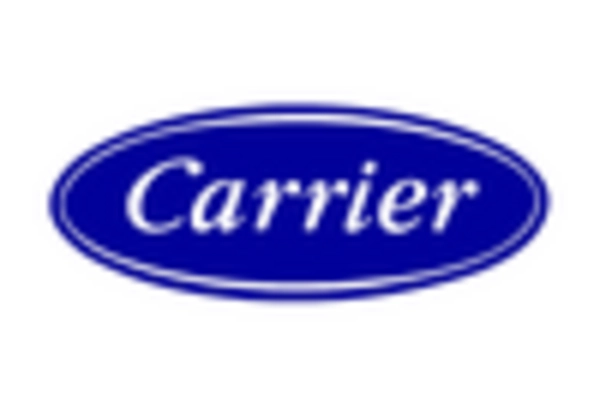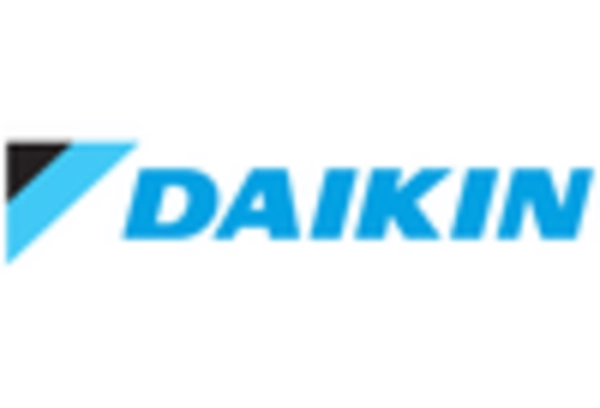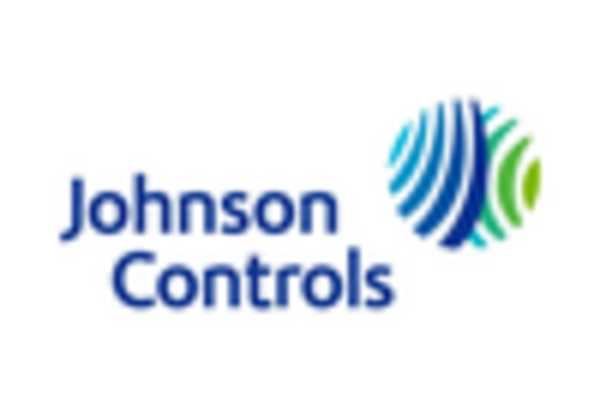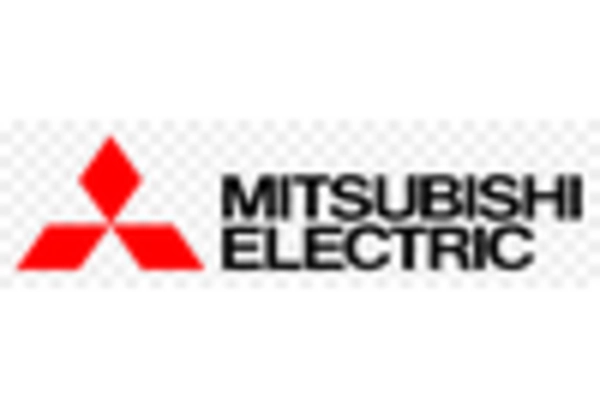Regulatory Compliance and Standards
The air handling-units market in China is increasingly influenced by stringent regulatory compliance and standards aimed at improving air quality and energy efficiency. The government has implemented various regulations that mandate the use of energy-efficient systems in commercial and residential buildings. This regulatory environment encourages manufacturers to innovate and develop advanced air handling units that meet these standards. As a result, the market is witnessing a shift towards products that not only comply with regulations but also enhance indoor air quality. The demand for compliant units is projected to grow, with an estimated increase of 15% in the next five years, reflecting the market's adaptation to these regulatory pressures.
Rising Demand for Energy Efficiency
Energy efficiency is a critical driver for the air handling-units market in China, as both consumers and businesses seek to reduce operational costs and environmental impact. The increasing cost of energy has prompted a shift towards more efficient air handling solutions that can significantly lower energy consumption. According to recent data, energy-efficient air handling units can reduce energy usage by up to 30%, making them an attractive option for building owners. This trend is further supported by government incentives aimed at promoting energy-saving technologies. Consequently, the market is expected to expand as more stakeholders recognize the long-term financial benefits of investing in energy-efficient air handling units.
Health Awareness and Indoor Air Quality
Growing health awareness among the Chinese population is a pivotal driver for the air handling-units market. As individuals become more conscious of the impact of indoor air quality on health, there is a rising demand for air handling units that can effectively filter pollutants and allergens. This trend is particularly pronounced in urban areas, where air pollution levels are higher. Manufacturers are responding by developing advanced filtration systems and technologies that enhance indoor air quality. The market is likely to experience a robust growth trajectory, with an anticipated increase of 18% in demand for air handling units designed specifically for health-conscious consumers.
Technological Integration and Smart Systems
The integration of smart technologies into air handling units is transforming the market landscape in China. With the rise of the Internet of Things (IoT), manufacturers are increasingly incorporating smart features that allow for real-time monitoring and control of air quality and energy usage. This technological advancement not only enhances operational efficiency but also provides users with valuable data for optimizing performance. The air handling-units market is likely to see a surge in demand for these smart systems, as they offer improved user experience and operational insights. It is estimated that smart air handling units could capture a market share of 25% by 2030, reflecting the growing trend towards automation and connectivity.
Urban Development and Infrastructure Projects
Urban development and large-scale infrastructure projects in China are significantly driving the air handling-units market. As cities expand and new commercial and residential buildings are constructed, the demand for effective air handling solutions rises correspondingly. The government’s focus on urbanization has led to increased investments in infrastructure, which includes the installation of advanced air handling systems in new developments. This trend is expected to continue, with projections indicating that the market could grow by 20% over the next decade, driven by ongoing urbanization efforts and the need for improved air quality in densely populated areas.

















Leave a Comment